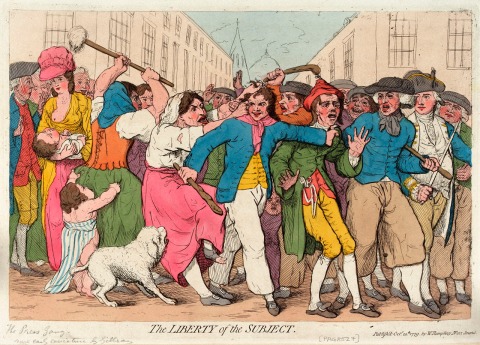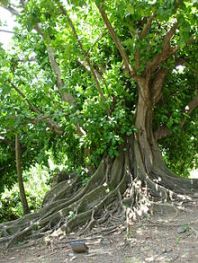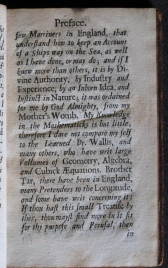I said at the start of this Channel voyage that I wouldn’t be live-tweeting the logbook as I’d done for Halley’s two Atlantic voyages, as I felt the high proportion of technical data would be of little interest to the general reader. That was a pity as the third logbook is the only one handwritten by Halley, and so from that point of view it’s an interesting document.
In fact I did tweet a few entries at the start of the voyage and I’m doing so again now at the end as these entries contain more general information – but to give you a flavour of the main substance of the log, here’s a typical entry in which Halley records soundings and the times and lunar positions of the tides:
[Sat, June 21] about 9h in the Morn I weighd and stood off to Sea, with a gentle gale of ENE wind, and about One after noon came to an anker in 18 fath. the Ness Light baring NNW; and Calis cliff ENE. here the westward tide was done at 5h.35′, or three hours and half before the Moons Southing. whence I concluded the course of the Tides here the same as at the Ness. viz that a II½ Moon ends the Eastern Tide. at 6h I weighd and stood to the eastward with a small gale of SSW wind, and about 9h fell with the West end of the Riprapps which is a narrow rigd of soft sand. I crost it severall times in 9, 8 and 7 fath and the Eastern tide being near done, I came to an anker in that depth the Ness light baring WNW and that of the South Foreland NbE p[er] Compass. here I rode two tides and found the Eastern tide done on a SW or NE Moon nearest. that it flowed about three fath. that it runs half tide here as by the Shore and that the Sett of the Stream is nearest NE and SW.
We’ll consider the purpose of this data when we look at the results of the voyage, but in this post I want to focus on what I like to call The Mystery of Halley’s Clerks.
Now that remark may excite expectations that this post will struggle to satisfy for this is not a tale of clerks going to sea and mysteriously disappearing, but rather a puzzle about what exactly the clerks did on the voyages – why, for example, was the third logbook written up by Halley and not by his clerk?
The clerk on the third voyage was one Richard Pinfold, who was the only person besides Halley to sail on all three voyages. On the two Atlantic voyages Pinfold was listed as captain’s servant, but on the third voyage he was said to have been captain’s clerk, and so I wondered whether he might have been a servant in Halley’s own household and been promoted to clerk as a ‘reward’ for going on the first two voyages, with Halley effectively covering the job himself. However, the manuscript pay and muster books show that Pinfold was actually entered as gunner’s mate and that the post of captain’s clerk was later interposed in the pay book beneath gunner’s mate. Pinfold was paid a salary as both gunner’s mate (£5 8s 6d) and captain’s clerk (£1 12s 11d), and the small wage paid to him as clerk suggests he performed that job for only a short time, and we know he wrote neither the logbook nor Halley’s letters.
The logs of the two Atlantic voyages weren’t written up by Halley, so they must’ve been written up by his clerks… well, possibly, but possibly not. There’s no immediate reason to doubt that the log of the first voyage was written by the clerk, Caleb Harmon, but the log of the second voyage is more of a puzzle. Halley wrote all his own letters to the Admiralty on both voyages, except for two on the second, and you might expect these to have been written by the clerk, William Curtiss, but they are in a different hand from that of the logbook. My first thought was that Curtiss perhaps fell ill with the “Barbadoes desease” at the same time as Halley, and so another crew member wrote them – but the two rogue letters (which are in the same hand) were written on 30 March and 8 July, either side of the period of sickness in late May, and the July letter states specifically that “we are a very healthy ship” at present. Why then did someone else write the letters, more than three months apart, and why did that person not receive extra pay as Pinfold did on the third voyage? Or why did Curtiss write the letters but not then the logbook?
The person who wrote the first logbook isn’t straightforward either. From the start of this project I’d been surprised at how neat and uniform the logs were and wondered whether they’d actually been written during the voyage or after the ship’s return to London, but then found that other logbooks were similarly neat and so thought that clerks might make draft notes and then write them up neatly while at anchor or in calm seas.
The idea of draft notes fits with a comment made by Alexander Dalrymple in an advertisement for his 1773 publication of Halley’s two Atlantic logs that
The Journal of Dr. Halley’s first Voyage is written on sundry scraps of paper, and some parts repeated in different places, and so blended that it was a very difficult matter to make it out intelligibly…
Dalrymple, who borrowed (and seemingly failed to return) these “scraps of paper” from the Board of Longitude, doesn’t mention whether the handwriting on the scraps was Halley’s or someone else’s, which is a pity as that might tell us something about how that logbook was compiled. A further curiosity is that Dalrymple seems to have been unaware of the existence of fair copies of the two logbooks (now in the British Library), and his published version of the second log was evidently compiled from another source, as there are discrepancies between the two. So what was the source for the second log used by Dalrymple, and who wrote it? And when were the fair copies of the two journals written?
These “sundry scraps of paper” also suggest a new spin on the warning given to Halley by Josiah Burchett at the end of the second voyage. Burchett wrote to Halley in Deptford, giving him permission to leave his ship to call on their lordships in London, “only lett mee give you this Caution, To have ye Books in readinesse”. Now I’d previously assumed this warning was intended to help Halley overcome the misgivings felt by some of their lordships about his handling of the prematurely-terminated first voyage* by making sure he was properly prepared when he met them, but now I wonder if it instead implies that Halley had previously displeased their lordships by returning from that voyage with only “scraps of paper” for his journal, and only had it written up on his return.
So while I think the mysteries surrounding Halley’s clerks might not rival And Then There Were None for excitement, they certainly seem to form a Problem at Sea.
* If you didn’t follow the first voyage, click on the tag for Edward Harrison to read about Halley’s problems with Lt Harrison and other officers.









